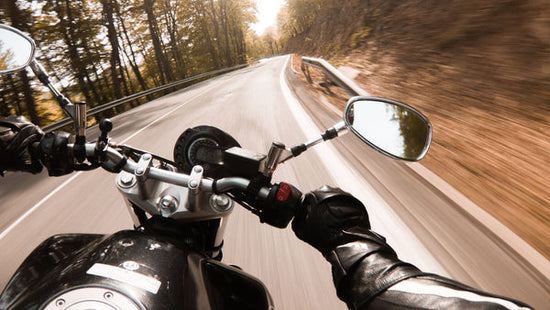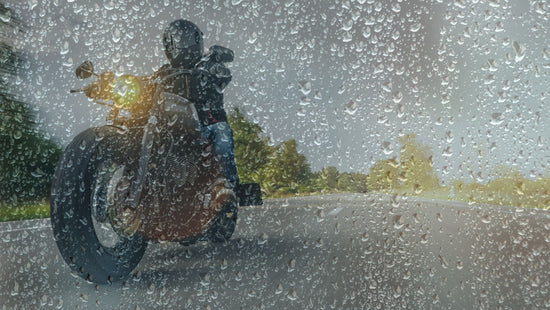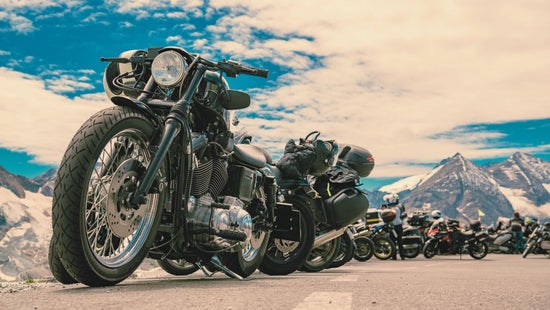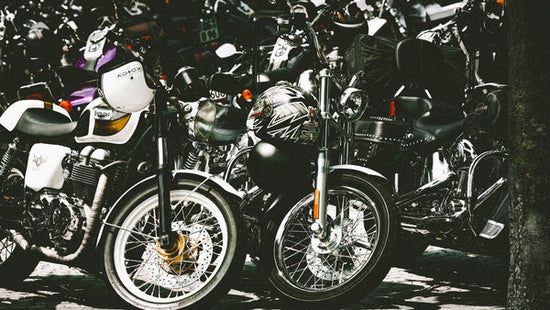

As a motorcycle rider, you may have heard the term "lane splitting" or "filtering" before. Lane splitting is the practice of riding a motorcycle between the lanes of traffic on a highway or road. This can be a controversial topic, with some riders and drivers in favor and others against it. In this blog post, we will explore the legal aspects of lane splitting, how to safely perform it, and why it can be a useful skill for motorcycle riders. Whether you are a new rider or a seasoned veteran, read on to learn more about this aspect of motorcycle riding.
Introduction
As a motorcycle rider, you know that the open road can be both exhilarating and dangerous. Riding a motorcycle requires skill, focus, and a deep understanding of the rules of the road. One of the most unique aspects of motorcycle riding is called lane splitting in the US and filtering in the UK. This practice involves riding between the lanes of traffic.
Definition of lane splitting or filtering
Lane splitting, also known as filtering, is the practice of a motorcyclist riding in between the lanes of traffic. Lane splitting can be a useful skill for motorcycle riders, as it can reduce traffic congestion and decrease the likelihood of rear-end collisions. However, it should only be done in a safe and responsible manner and motorcycle riders should wear proper safety gear, and practice defensive riding techniques.
Legal status in various countries
It is a controversial topic that is legal in some states and countries but illegal in others. Even if legal, in some jurisdictions it comes with conditions and rules under which it can be performed, for example only in slow or static traffic. The fact is, that lane splitting or filtering is performed by motorcyclists everywhere and in most places tolerated by the majority of police and public. However, if that is your case be aware, that if any accident happens, you as a filtering motorcyclist will be at fault.
Benefits of Lane Splitting

Reduced traffic congestion
One of the main benefits of lane splitting is reduced traffic congestion. When you're riding between the lanes, you're not taking up space in a lane, which can help alleviate traffic backups. This can be especially helpful during rush hour or other times of heavy traffic.
Time-saving
Another obvious benefit of lane splitting is that it can save time. Since motorcycles are smaller and more agile than cars, they can maneuver through traffic more quickly. This is the reason why most of us bikers ride a motorcycle in the city. It is not much fun, but you can save a lot of time. If you are new to motorcycle riding or commuting on your motorbike, don’t be afraid to filter as soon as you get enough grip of your machine and get some basic sense of reading the traffic patterns and driver behavior.
Improved fuel efficiency
Another benefit of lane splitting is improved fuel efficiency. Since motorcycles are not stuck in traffic, they use less fuel than cars and can get better gas mileage. This can save you money on gas and reduce your carbon footprint. This together with reduced traffic congestion are the main arguments for lane splitting / filtering that should resonate with any traffic participant.
We bikers also know that moving keeps us cool in heat and prevents our motorcycles from overheating, especially models with old fashioned air cooling. Plus, it's just more fun to ride a motorcycle than sit in traffic!
Reduced chances of rear-end collisions
Reducing the danger of being rear ended by a car or truck and getting crushed in between two cars is the main reason why I never stop behind a vehicle, but always filter in between cars. As a biker, I am too vulnerable to just passively sit there and wait if I am lucky enough and the drivers behind me are paying attention.
Risks Associated with Lane Filtering
Obviously it is not all so bright with lane splitting / filtering. While it can be a time-saving and efficient way to navigate congested roads, it also comes with an increased risk of accidents. Except for the legal challenges it comes with operational risks, that you need to be aware.
Increased risk of accidents
One of the main risks associated with filtering is the close proximity to other vehicles. Riding in between lanes requires a high level of skill and attentiveness, as sudden movements from other drivers can quickly become dangerous and result in accidents.
Poor visibility
Another risk associated with filtering is the potential for drivers to become distracted or unaware of motorcyclists in their blind spots. This can lead to rear-end collisions or side-swipe accidents, which can be particularly dangerous for motorcyclists due to their lack of protection.
Limited space for maneuvering
Additionally, filtering can be particularly dangerous in heavy traffic or when lanes are narrow, as there may not be enough space for a motorcycle to safely pass.
Aggressive motorists
This is the sad part. Some car drivers cannot handle the fact that they have to sit in traffic and you don’t and demand that you wait in the queues with them. It is pathetic and some primal instincts must play a role here. On every ride you will encounter some drivers like that, especially in places where lane splitting and filtering is against the regulations, because here they feel the law is on their side and some people just like to play the police. In a better case they won’t make room for you, in other more severe instances, they actually become dangerous to the bikers.
Safety Tips for Lane Splitting or Filtering

Knowing the law
Knowing the law is crucial when it comes to lane splitting. In the United States, lane splitting is not legal in all states, so it is important to check the laws in your state before attempting it. In the United Kingdom, traffic filtering is allowed, but only in certain circumstances. In general, it is legal when traffic is moving at a very slow pace or is stopped, and it must be done in a safe and responsible manner.
Practice makes perfect
As with any motorcycle riding technique just like cornering, practice makes perfect. Start by practicing in a safe and controlled environment, such as an empty parking lot, before attempting to lane split in traffic. Gradually work your way up to busier and more challenging situations. Remember to always stay alert, anticipate the movements of other drivers, and be prepared to take evasive action if necessary.
Stay within your limits
Lane splitting can be physically and mentally demanding, so it is important to stay within your limits and not exceed your skill level. If you feel uncomfortable or overwhelmed, it is better to wait and merge back into traffic than to risk an accident.
Understanding traffic patterns
Understanding traffic patterns is also important when it comes to lane splitting. It is crucial to recognize when lanes are starting to merge or when traffic is slowing down, as these situations can be particularly dangerous for bikers. Always keep an eye out for turning vehicles and be prepared to slow down or stop if necessary.
Wearing protective gear
It goes without saying that when riding a motorcycle you should always wear proper safety motorcycle gear. Even if you commute in the city in slow moving traffic, you should always have at least the basic level of protection.
Staying alert and focused
It is important to stay focused and alert when lane splitting. Avoid distractions such as using your phone or listening to music, and always keep your eyes on the road. Remember that even the safest riders can still be involved in accidents, so it is important to always be prepared for the unexpected.
How to Filter the Traffic
Choosing the right lane
Choosing the right lane is crucial when it comes to filtering / lane splitting. It is recommended to split between the two leftmost lanes (in a country with ride-hand side traffic), as drivers in the far right lanes are more likely to exit or merge. Additionally, it is important to consider the width of the lanes and the size of your motorcycle. Make sure to choose a lane where you can safely fit without risking hitting any other vehicles. Bicycle lanes are another way to overtaking slow moving traffic, but this is definitely outside the law and requires even more attention.
Approaching traffic
When approaching traffic, it is important to slow down and assess the situation before attempting to filter. Look for any potential hazards, such as turning vehicles or sudden lane changes by other drivers. Keep a safe distance from the cars in front of you, and always be prepared to brake or accelerate if necessary. I always ride with my two fingers on the front brake, but when filtering I have my foot ready to use the rear brake as well. It might not seem so, but the safest way to filter through traffic is when the cars are lined up next to each other. That way you can be sure that the drivers will not attempt to change lanes, because they have nowhere to go.
Speed of traffic
The speed of traffic is an important factor to consider when filtering traffic. It is generally recommended to split lanes when traffic is moving at a slow pace that is safe and comfortable for you. The rule is not to go way faster than the traffic. Avoid attempting to lane split when traffic is moving at high speeds, as this can be dangerous and increase the risk of accidents.
Passing other vehicles
When passing other vehicles, it is important to do so in a safe and responsible manner. Avoid passing between large vehicles, such as buses or trucks. It is always uncomfortable to pass next to a large truck. Not only do you have less space between the lanes, but the trucks have a limited visibility when you are next to them and the big wheels turning right next to me are quite scary. I always try to wait for the most suitable time, like when there is no car in the other lane, or a one that has moved to the side to make me extra room. Additionally, avoid passing vehicles too closely, and always be prepared to stop or slow down if necessary.
Common Myths About Lane Splitting
It is illegal
One of the most common myths about lane splitting is that it is always illegal. In fact, the legality of lane splitting varies from state to state in the United States, and in some countries, it is perfectly legal. In California, for example, lane splitting is legal as long as it is done in a safe and responsible manner. However, in other states, it is illegal and can result in fines and penalties.
It causes accidents
Another myth about lane splitting is that it is always dangerous. While there is no denying that lane splitting can be risky, it can also be done safely if you use caution and follow some basic guidelines. It is important to always be aware of your surroundings, maintain a safe speed, and never take unnecessary risks.
It is only safe for experienced riders
Finally, some people believe that lane splitting is only for experienced riders. While it is true that more experienced riders may be more comfortable with lane splitting, it is also a technique that can be learned by newer riders with practice and guidance. It is important to start slowly and gradually build up your confidence and skills before attempting to lane split in heavy traffic.
It is only for small motorcycles
Sometimes I see large cruisers and tourers that don’t want to filter in the city. It all depends on the width of the lanes. You can comfortably filter with a large motorbike, if the lanes are wide enough.
Conclusion
In conclusion, lane splitting or traffic filtering can be a safe and effective way to navigate through heavy traffic on a motorcycle. While it is important to be aware of the legal aspects of lane splitting in your particular region, it is equally important to understand how to do it safely. Avoid dangerous myths and misconceptions about lane splitting, and always prioritize safety over convenience. With a little bit of practice and guidance, even new riders can learn to safely filter through traffic and make their commute a little bit easier and more enjoyable. So go out there, stay safe, and enjoy the ride!
What is lane splitting or traffic filtering?
Lane splitting or traffic filtering is the practice of riding a motorcycle between lanes of stopped or slow-moving traffic. It is a technique that can be used to reduce congestion and make commuting easier for motorcycle riders. However, it is important to remember that it can be dangerous if not done properly.
Is lane splitting or filtering illegal?
One of the most common myths about lane splitting is that it is always illegal. However, the legality of lane splitting varies from state to state in the United States and country to country. In California, for example, lane splitting is legal as long as it is done in a safe and responsible manner. However, in other states, it is illegal and can result in fines and penalties.












